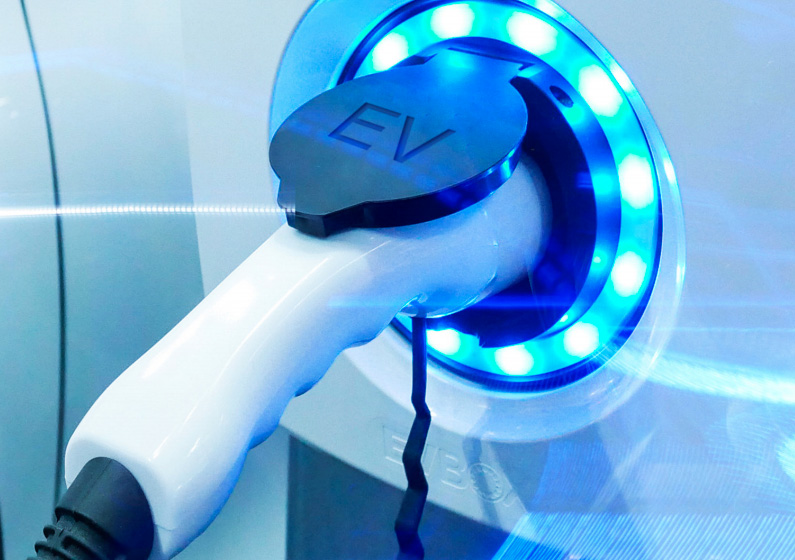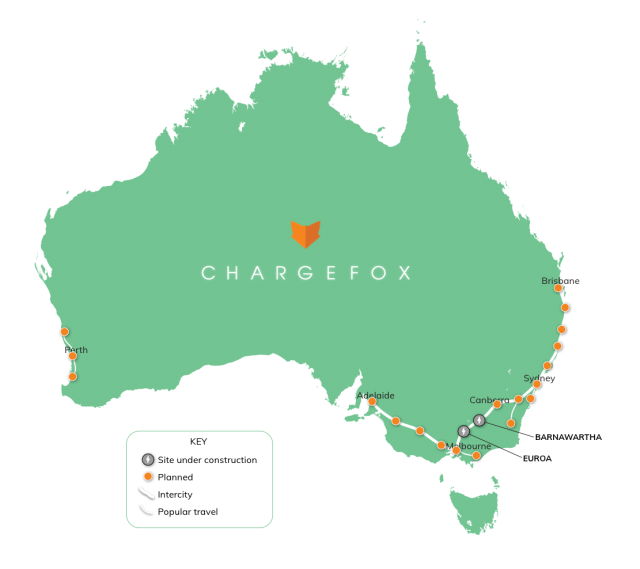Chargefox network opens door to electric road trips
You know the stress of expecting an important call when your phone battery is on two per cent… now imagine that is your electric car battery and you are in the middle of nowhere.

Range anxiety is a one of the biggest barriers to the uptake of electric vehicles. We live in a big country and today’s electric vehicles can’t compete with petrol cars for range between refills.

When the time comes to recharge, the process takes hours and plug in points are thin on the ground.
But that is set to change with ARENA announcing $6 million in funding for Chargefox to build an ultra rapid charging network.
Chargefox will deploy 21 new charging sites with at least 42 charging stations along major driving routes across Australia. The “ultra rapid” network will connect Brisbane, Sydney, Canberra, Melbourne and Adelaide, and will also include sites north and south of Perth.
The network will be powered by purchased renewable energy, and at least one site at Euroa in northern Victoria will trial an on-site solar and battery powered system.
Charging sites will be public and compatible with all models of electric vehicles currently sold in Australia, with distances between plugs planned to be no greater than 200 kms – well within the range of today’s EVs.
New technology breaks down barriers
Chargefox’s super-high powered charging points will allow an EV to fill its batteries in as little as 15 minutes. For owners of electric cars used to overnight recharges this is a game-changer, providing unprecedented opportunities to break free from urban areas.

The Chargefox rollout comes at an important time. Because EVs are yet to hit the mainstream, the cars are expensive and recharging infrastructure sparse.
The electric vehicle sector faces a chicken and egg challenge – manufacturers won’t bring their models to our market until a charging network is in place to support them. And there is little incentive for councils or private companies to invest in charging stations until there is demand from electric vehicle owners.
21 charging sites “just the beginning”
Today Chargefox manages a network of over 350 charging plugs owned by local councils, shopping centres and retailers. These stations are almost all 25kW or lower in power, with only a few DC 50kW stations on the network.
Chargefox CEO Marty Andrews says the 21 new charging sites announced today will unlock Australia’s most trafficked inter-city routes along major highways to electric vehicles.
“These are super-high powered stations, so the car will charge itself up in 15 minutes while you are inside grabbing a snack,” he said.
Andrews identifies Electrify America – the program stemming from Volkswagen’s dieselgate scandal – and the fledgling European IONITY network as inspirations.
Describing range anxiety as a difficult thing to explain until you actually experience it, Andrews says it is a front of mind concern when prospective buyers look at EVs in the showroom.
“What if I want to drive from Melbourne to Sydney – at the minute the dealers will say you can’t, and they just want that question to go away.”
“We start by following the most-travelled routes in Australia. Melbourne to Sydney is the first one, but it also means Adelaide to Melbourne, and then from Sydney up to Brisbane, and a bit over in Perth.
“It’s largely driven by the car manufacturers themselves. Those areas are where they sell the most cars, and where people do the most driving,” he said.
“Once that initial backbone network is built and the car manufacturers are selling cars, the network expansion begins to self-fund. We won’t stop at the initial 21 sites,” he declared.

ARENA supporting the journey to an EV future
Earlier this year, two ARENA-funded studies were published – Climateworks examined the State of Electric Vehicles in Australia, and Energeia’s Electric Vehicle Market Study modelled future possibilities.
Viewed together, the reports present an EV industry with a boot load of potential, but plenty of work ahead.
The good news is that the playing field is levelling. Advances in technology and economies of scale means EVs are well on the way to travelling as far between recharges as petrol cars, and carry an equivalent price tag – the primary considerations in the mind of new buyers.
ARENA CEO Darren Miller says the agency is supporting Chargefox to help increase the uptake of electric vehicles in Australia.
“This is game-changing. Electric vehicles are the future, but gaps in charging infrastructure need to be closed for them to become a mainstream option,” Mr Miller said.
While range anxiety is a headline issue for many weighing up switching to an electric vehicle, Energeia’s report cited a little-known fact – 99 per cent of Australian daily trips are less than 50km. With a 100km round trip well within the capability of any new electric car on the market today, there is little standing in the way of a dramatic acceleration in the uptake of EVs.
Miller points out that Australia lags behind other countries in EV uptake, but there are predictions they could reach price parity with petrol cars within the next few years.
“The other major barrier – a lack of access to convenient public charging points for long distance travel – is something we need to start solving now,” he said.
Linking existing urban charging infrastructure, Chargefox’s inter-city network will mean for the first time there are charging points across and between Australia’s biggest cities.
“This ultra rapid charging network will be the fastest charging technology in Australia, but will also be entirely powered using renewable energy.
“This technology is becoming common around the world, so Australia has work to do in order to keep up,” he said.
LIKE THIS STORY? SIGN UP TO OUR NEWSLETTER

ARENA